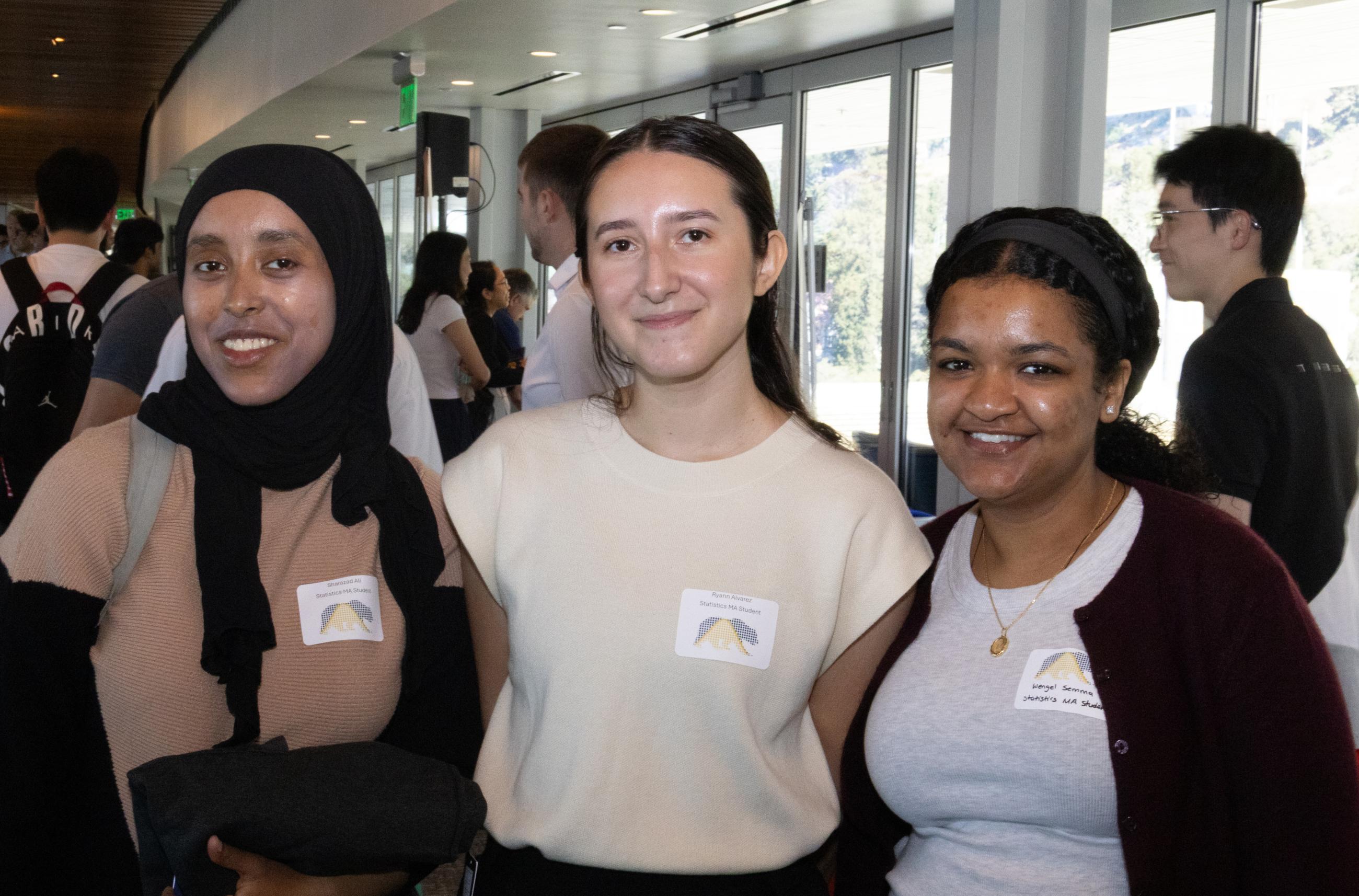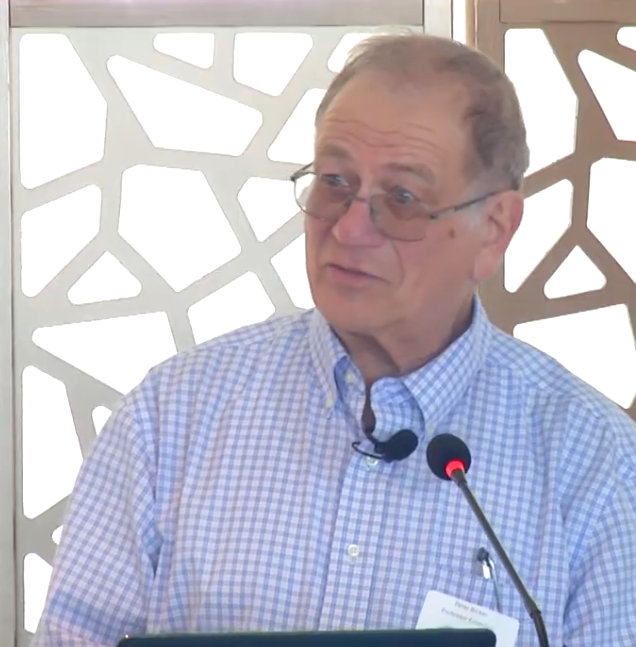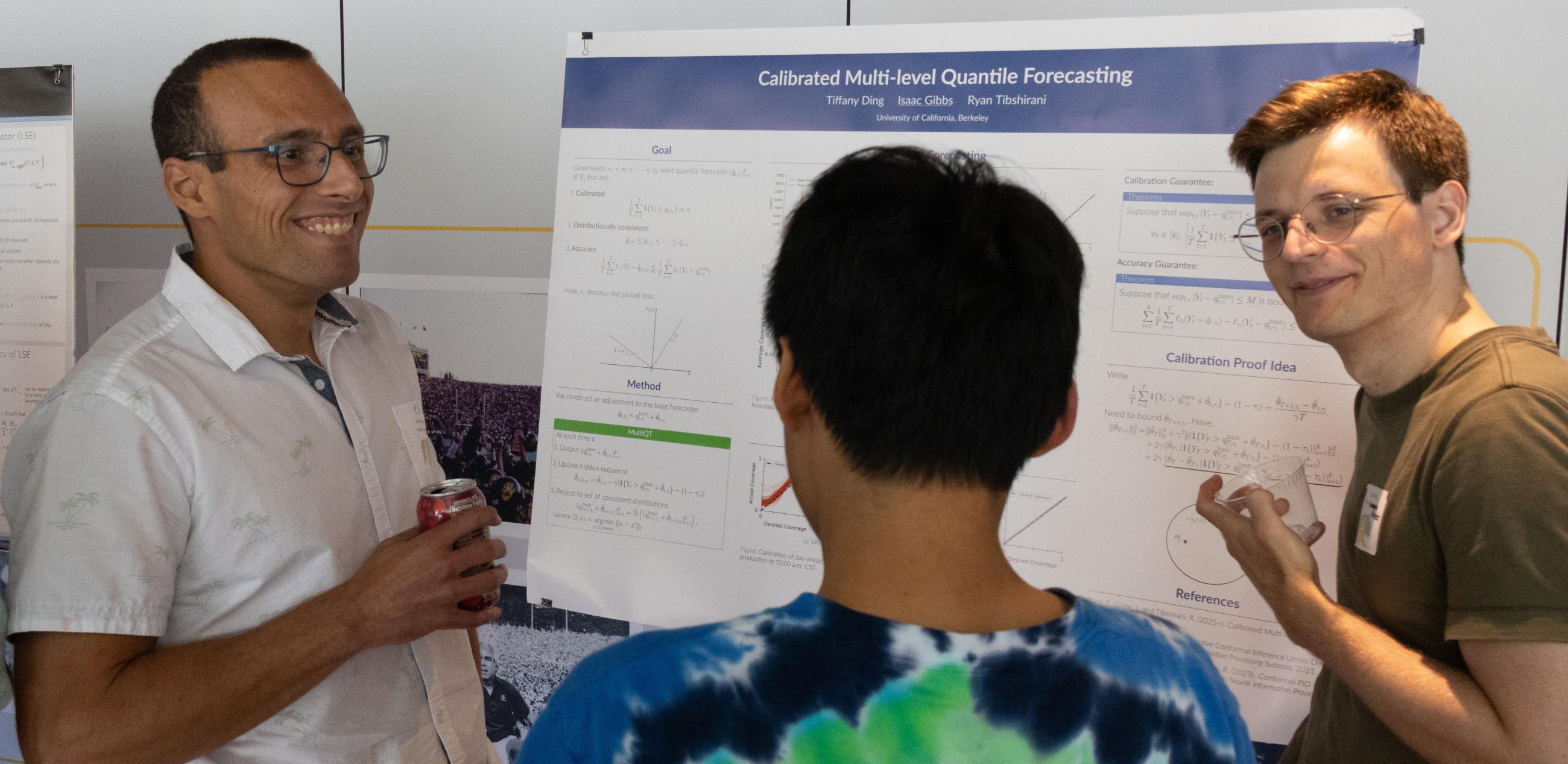
On a sunny late summer day, UC Berkeley Department of Statistics’ faculty, students, alumni, researchers and industry partners gathered on campus to celebrate the 70th anniversary of the department’s founding.
The anniversary was a featured highlight at the Berkeley Statistics Annual Research Symposium (BSTARS) on Sept. 17 at California Memorial Stadium’s University Club. Each year, the university’s statistics community and its partners discuss recent research developments in the department and possible applications to statistical problems encountered in industry. The 2025 symposium included talks by faculty and industry guests, an alumni panel and a reception with poster session.
“BSTARS and the 70th anniversary are a great way to celebrate the groundbreaking scholarship and steadfast commitment to education here at UC Berkeley by the Department of Statistics," said Ryan Tibshirani, professor and chair of the department. “Over the last seven decades, this department has shaped the way we study statistics, and I have every reason to believe we will remain thought leaders in the 21st century.”

Peter Bickel, who joined the faculty 62 years ago after completing his PhD at Berkeley, gave the keynote address on the department’s history. Bickel is now an emeritus professor of statistics.
An important “pre-department” historical milestone for the statistics community happened in 1938, Bickel noted, when Jerzy Neyman left his position at University College London to join Berkeley as professor of mathematics. Shortly after arriving at Berkeley, he founded one of the first statistical research laboratories in the United States.
A leading scholar of his time, Neyman developed the modern concept of confidence intervals into statistical hypothesis testing. The Neyman allocation, an optimal strategy for choosing sample sizes in stratified sampling, is named for him.
During World War II, Neyman and Elizabeth Scott made scientific contributions to the U.S. effort by analyzing the statistical distribution of bombing patterns. They developed the Neyman-Scott process, a stochastic model widely used to describe phenomena with clustered point patterns. Bickel noted that scientific advancements during World War II led to an appreciation of, and increased federal funding for, statistics research and its real-world applications.
With Neyman as its first chair, Berkeley’s Department of Statistics was formally established in 1955, focused on probability and mathematical statistics. Bickel mentioned that Neyman distinguished between general applications, which he called “conceptual,” and particular ones, which gave the department an early openness to new ideas and joint appointments with other Berkeley departments such as electrical engineering and economics.
“The excellence of the department and drawing of students and faculty from all over the world” were part of its earliest beginnings and continue to present day, Bickel said.
Faculty of Berkeley Statistics during the 1955 department founding, in addition to Neyman and Scott, were: Edward Barankin, David Blackwell – the first tenured Black professor at Berkeley, Evelyn Fix, Joseph Hodges, Lucien Le Cam, Erich Lehmann, Michel Loève, and Henry Scheffé.
Bickel described the contributions of women among the department founders – Fix and Scott – and noted that women faculty continue to be leaders at Berkeley Statistics and in their fields.
“Ani Adhikari, Bin Yu, Deb Nolan, Sandrine Dudoit, Haiyang Huang, and Elizabeth Purdom have been central to the development of data science, the Center for Computational Biology, and the College of Computing, Data Science, and Society,” Bickel said.
Bickel highlighted several major contributions made by Berkeley Statistics faculty past and present, and concluded the history lesson with his hopes for the future.
“For the College of Computing, Data Science, and Society, I hope it will foster statistical methods between all areas in which data is crucial or becoming so,” Bickel said, noting opportunities to increase discussion and connection with biological, physical, mathematical and social sciences and humanities and the arts.








